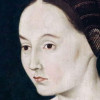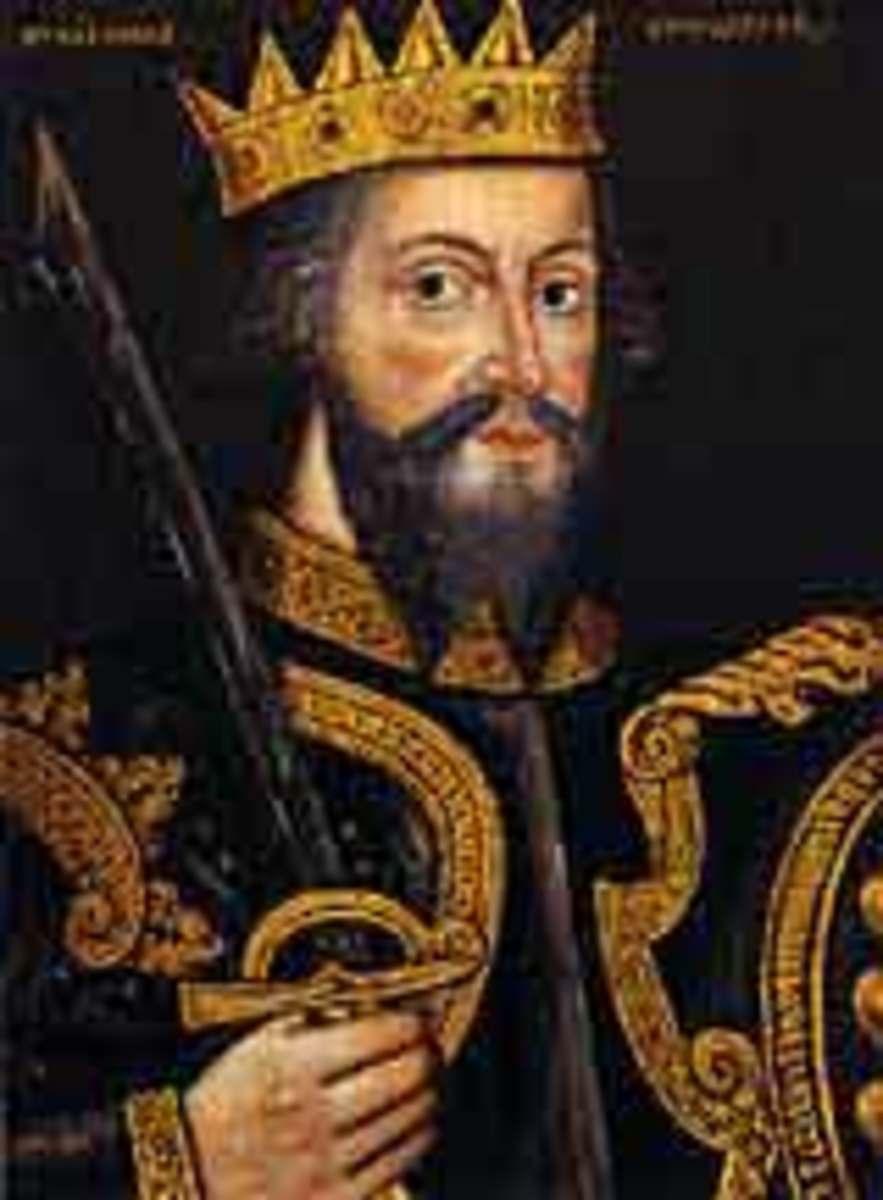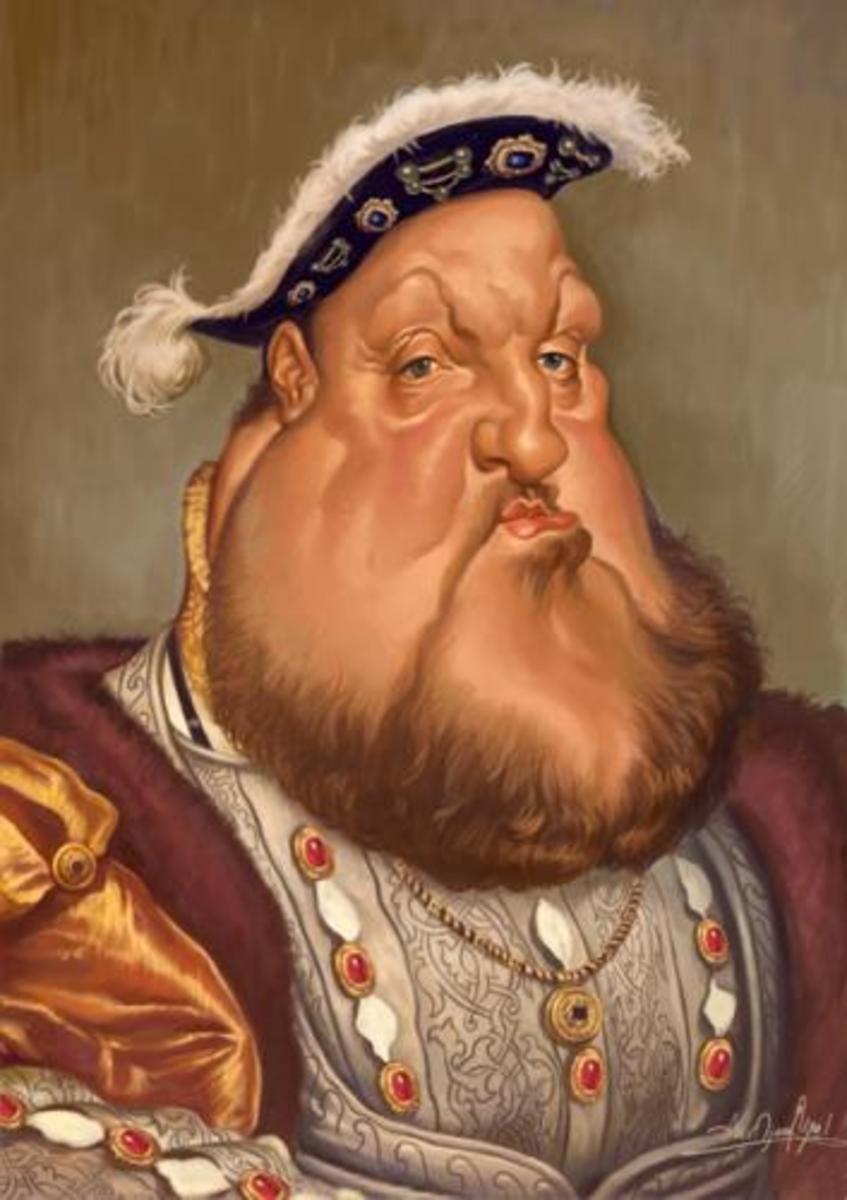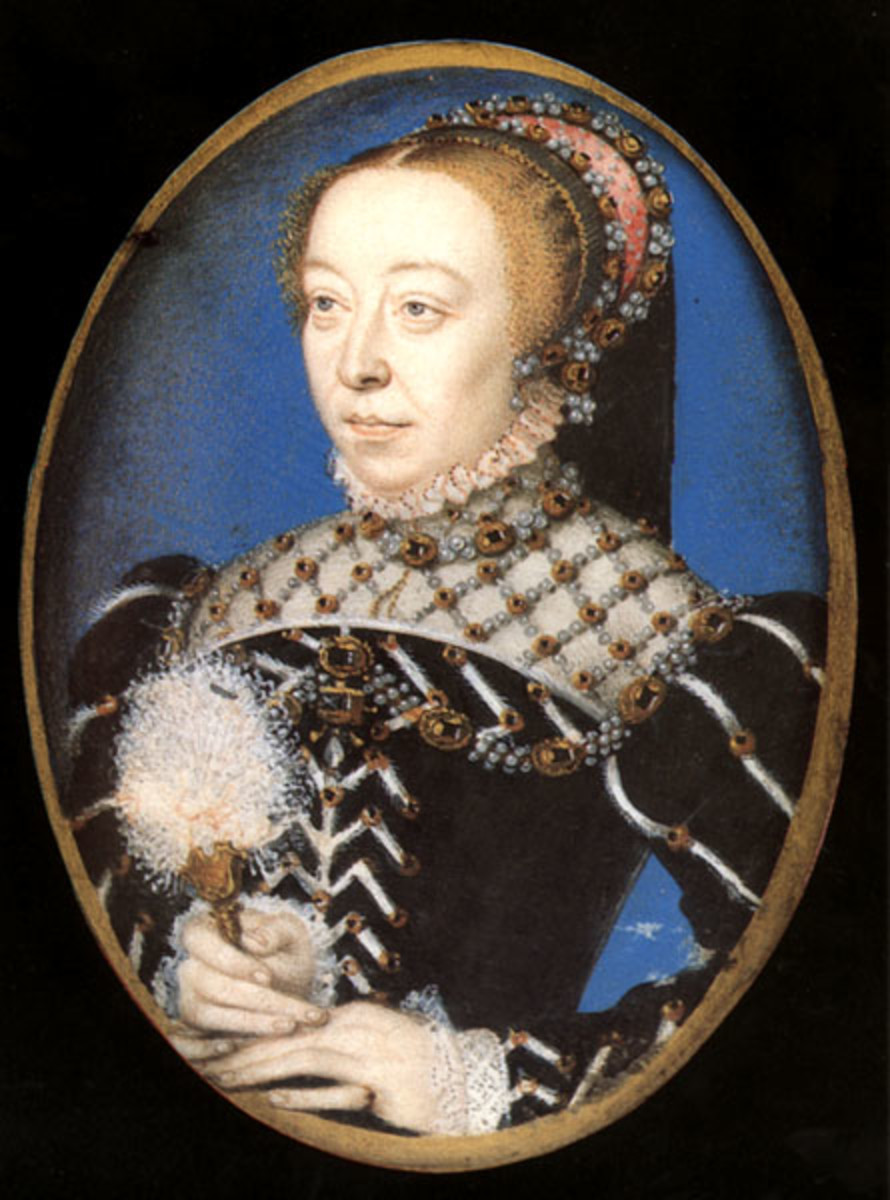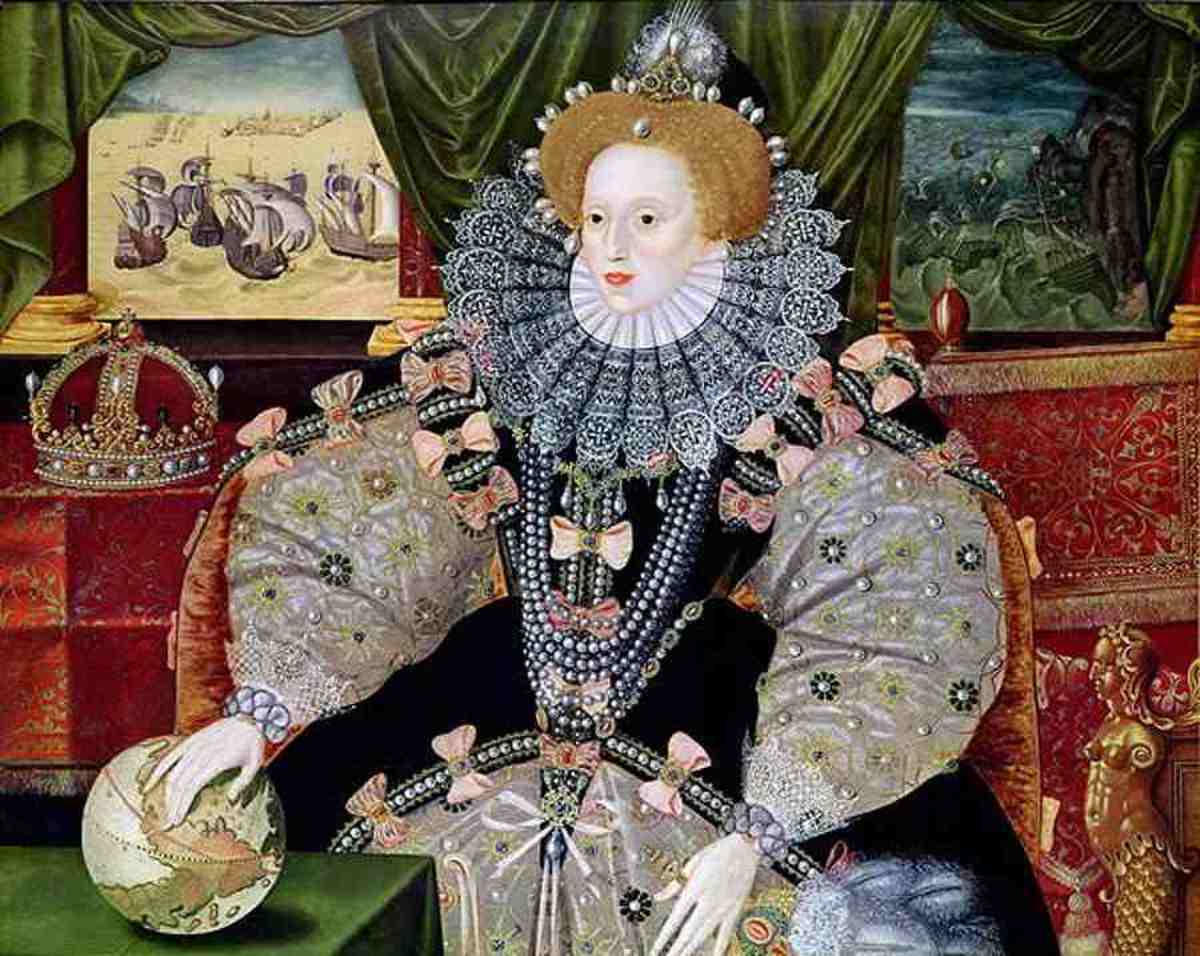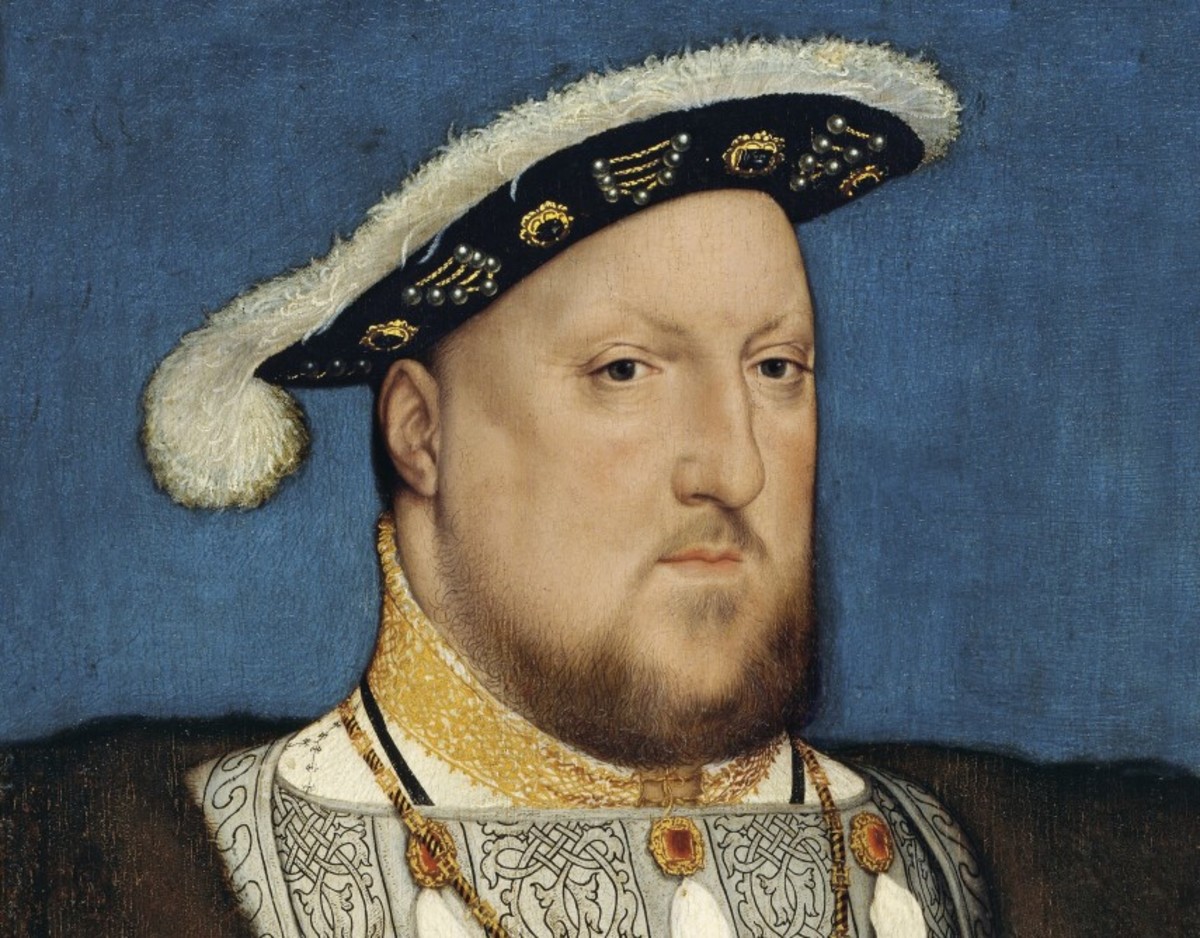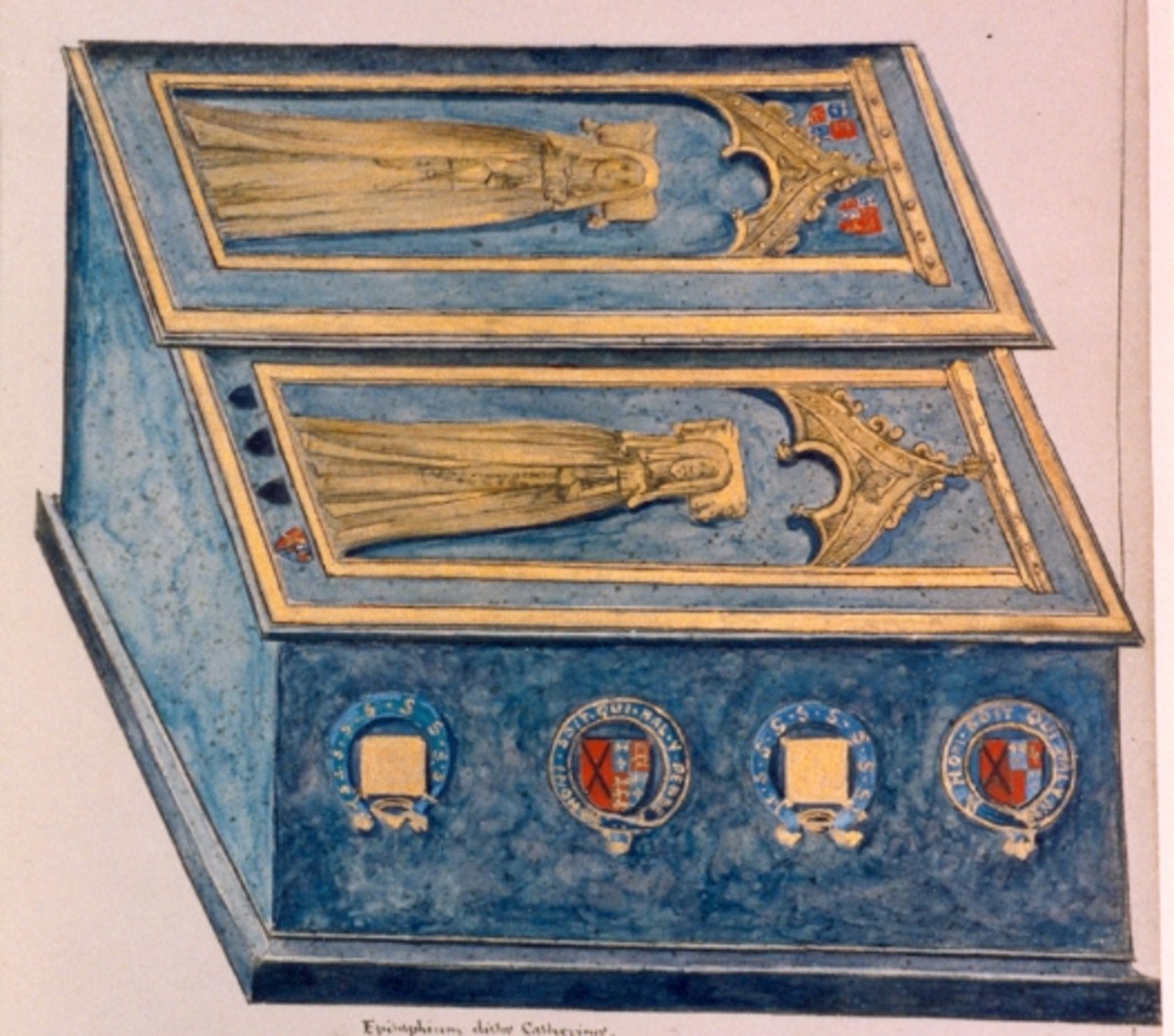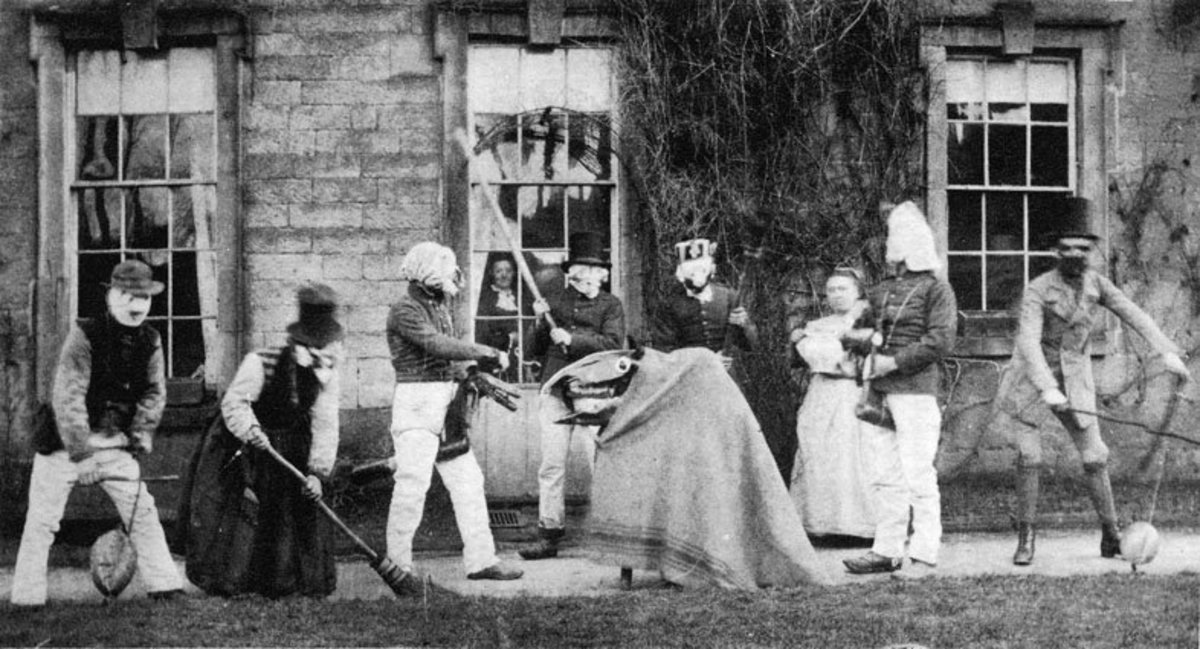Jane Seymour



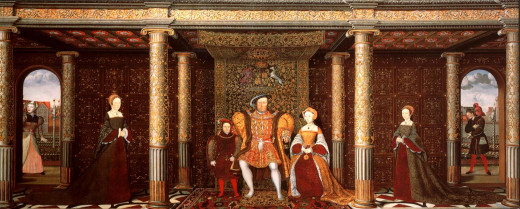
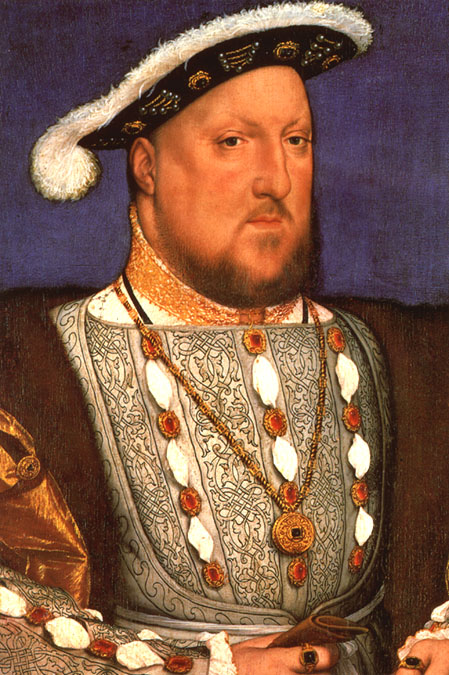
The Third Wife
Jane Seymour, the fifth child and eldest daughter of Sir John Seymour and Margaret Wentworth, was born around 1509. She had been at court in the service of Queen Katherine of Aragon before switching to Anne Boleyn by early 1533.
King Henry paid a visit to her family at Wolf Hall in late 1535. This appears to be where he first became attracted to her. The ambassador Chapuys described Jane as 'of middle height, and nobody thinks that she has much beauty. Her complexion is so whitish that she may be called rather pale'.
Attempts to supplant Queen Anne were put on hold during her last pregnancy - King Henry would never get rid of a pregnant wife. When that pregnancy ended in miscarriage in January 1536, events moved fast.
The enemies of Queen Anne and her family seem to have decided to play the game that Queen Anne had once played against Queen Katherine, and chose Jane, who followed orders.
It is this obedience that made her particularly attractive to King Henry VIII. Queen Anne's dark eyes flashed in challenge; she dared to upbraid her husband, to argue. She became jealous and lost her temper at a moment's notice. Jane Seymour appeared meek and docile. She was sweet-tempered and plain. In short, she was Anne's opposite.
On the 3rd of March, the Chancellor Thomas Cromwell and ambassador Chapuys had a conversation about the King's marriage. Chapuys managed to convey a message to Cromwell without saying it outright - if the King got rid of Anne Boleyn, Emperor Charles V would be willing to be Henry's ally. It was food for thought.
The King sent Jane a letter and a present of money. Jane remembered to play Anne's game. She kissed the letter and told the messenger to return the money, as she was a woman who had nothing but her honour, and asked that if the King were to give her money, then she prayed that it would be when she had made an honourable marriage. This only made the King even more infatuated with her - he admired her modesty.
When Queen Anne was arrested, Jane Seymour was sent to stay at the house of Sir Nicholas Carew near Croydon. By the 15th of May, she was back in the city, at Sir Thomas More's former house, which was only a short boat journey from Whitehall. The King and Jane were betrothed the day after Anne's execution. Then on the 30th of May, King Henry VIII married his third wife 'in the Queen's closet' at Whitehall.
A week after his latest marriage, King Henry saw two pretty young ladies and said he wished he had seen them before he married again. Queen Jane turned out to be just as strict with her ladies as Katherine of Aragon and Anne Boleyn had been. She decided against allowing her ladies to wear the French hoods that had been favoured by Anne Boleyn and chose instead to wear the Gable hood, which had been worn by the pious Katherine. Her religious beliefs were also more in line with Katherine than Anne, but she has been occasionally mistakenly identified as Protestant because of the religious leanings of her siblings.
Queen Jane has been credited with causing Henry to reconcile with his eldest daughter, Lady Mary. However, Henry would never do anything that he wasn't disposed to do, and the credit of the reconciliation goes to Lady Mary herself, though it cost her the peace of her conscience to do so. The King would only reconcile with his eldest daughter if she submitted absolutely to his will.
Lady Mary would have to admit that the marriage of her father and mother had been invalid, that she herself was illegitimate, and acknowledge her father as Supreme Head of the Church of England when Lady Mary was every bit as devout in her religious beliefs as her mother had been. The strain of the years of being unloved was showing in Lady Mary. Her health had suffered, she was emotionally drained and she had probably suffered great psychological stress as well. As a result of all of this, she submitted on the 22nd of June and signed away her beliefs as well as her principles. She also wrote to Chapuys and asked him to obtain a secret absolution from the Pope for her, so she could put her mind at ease.
Mary's reward was to see her father for the first time in five years, and meet her new stepmother. The King and Queen came to Hunsdon and met Mary on the 16th of July. Henry gave his daughter the sum of 1,000 crowns as a gift and Queen Jane gave her a diamond. The Second Act of Succession also made its way into the House of Lords. Precedence was given to any child borne by Queen Jane, or more ominously, any subsequent wife. Lady Mary was still excluded, and Princess Elizabeth was excluded by the new Act, becoming Lady Elizabeth.
At the beginning of October, there were risings in the north of England against the religious changes in England and the 'low-born' counsellors of the King because of the 'low-born' Cromwell and his taxes. These risings became known as the Pilgrimage of Grace. The French ambassador reported that, 'At the beginning of the insurrection the Queen threw herself on her knees before the King and begged him to restore the Abbeys.' The King told her to get up, and said he 'had often told her not to meddle with his affairs' and menacingly reminded Jane of the 'last Queen'. The King would not brook any interference from a wife now. He wanted absolute compliance.
The Pilgrimage of Grace was stopped when the King appeared conciliatory, but there were more risings in January 1537, and the King took his chance to get revenge, ordering the executions of a number of inhabitants in every town, village and hamlet in the North.
In March it became known that Queen Jane was pregnant. She knew that everything depended on it being a boy - she knew what the consequences could be if she failed.
The Queen went into confinement in late September. On the afternoon of the 9th of October she went into labour. It was a difficult birth, and it wasn't until two o'clock in the morning of the 12th of October that the baby was born. It was a boy at last. There is a story that the King wept when the baby Prince was put into his arms. The name chosen was Edward, because if was the eve of the Feast of St Edward, and the child was also named for his great-grandfather, Edward IV.
The Queen made the official announcement for the birth. This time the word 'Prince' did not need to be edited. England celebrated the birth with bonfires, church bells ringing and free wine in every direction. The last male heir to the throne had been the King's first son, Prince Henry, who had died twenty-six years before. Prince Edward was christened on the 15th, and Queen Jane was making a good enough recovery that she could receive guests after the christening.
Suddenly, she fell ill with puerperal fever. It was one of the main causes of death for women in that period after they had given birth. In the 16th century, hygiene was not properly understood, and this increased the risk of infection. On the 19th there was a procession at St Paul's for her health.
She rallied on the 23rd but it was brief. She became delirious in the night and her condition worsened. Early the next morning her confessor was sent for and he was prepared to administer Extreme Unction.
Sir John Russell, a courtier, was at Hampton Court and he wrote to Cromwell, telling him that the King had been planning to go hunting that day but stayed because the Queen was ill - but he would go the next day whether or not she improved, 'if she amend not...he could not find it in his heart to tarry'.
In the evening it became clear she was dying and Norfolk wrote to Cromwell to tell him to 'be here tomorrow early to comfort our good master, for as for our mistress there is no likelihood of her life, the more pity, and I fear she shall not be in life at the time ye shall read this'.
Just before midnight on the 24th of October 1537, Queen Jane Seymour died. She had been Queen of England for less than eighteen months. She was buried in a vault in St George's Chapel at Windsor, where the body of her husband joined her a decade later. Jane Seymour remained the favourite wife of King Henry VIII long after her death because she succeeded in giving him a son.
